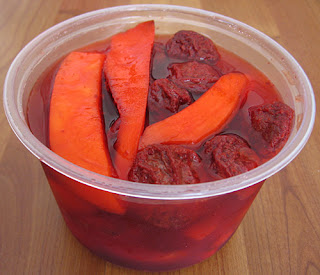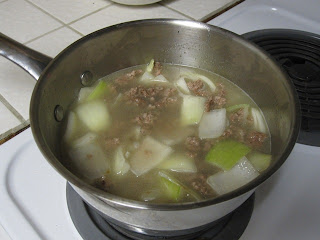Do you have any idea what these are? Would you ever consider putting one in your mouth? Unless you happen to be a born-and-bred local or were raised in a traditional Chinese family, probably not.
What if I told you that it was a dried, shriveled, salted plum that has a very strong flavor that is sweet, sour, and salty all at once? Most would still politely decline.
Now what if I told you that this wrinkled, rock-like pit is the basis of an entire category of treats in Hawaii and is part of a beloved local snack tradition?
Some local treats are colorful, appealing, and easy to justify: I’d like to think that very few were put off by my depictions of shave ice and beef curry. But there are some local delicacies that take some explanation to convince a less adventurous eater. Crack seed is definitely one of the latter.
“Crack Seed” refers to a broad category of local snacks that can be described, in simplest terms, as preserved fruit. While preserving produce is a common practice in many cultures, the origins of Hawaii’s crack seed can be specifically traced back to China, where fruits were dried and salted for travelers to consume on long treks across the countryside. Crack seed came to Hawaii with the influx of Chinese immigrants in the late 19th century and took hold as the snack of choice for plantation workers. It provided the salts needed to endure long days in the fields, was easy to make at home, and inexpensive enough to fit into even the most meager of budgets.
More than a century later, crack seed is no longer associated with hard labor and frugality, but the spirit of home-made, down-to-earth deliciousness remains unchanged, and the best crack seed Hawaii has to offer can still be found in small, family-run shops.
 |
| The spread at my favorite crack seed store in Kaimuki. |
The quintessential crack seed treats are several varieties of dehydrated plum and cherry, but other local favorites include mango, peaches, ginger, and anything else you could conceivably salt or pickle. And from there the possibilities are limited only by your imagination: crack seed flavors can be exported to be mixed with other snacks, or reintegrated back into itself to create an endless variety of delicious combinations.
Specifically, “li hing,” a flavor derived from dried salted plum (shown in the first picture of this post) is commonly powderized and combined with other snacks to add a pucker-worthy sweet-sour-salty kick to just about anything. Locals enjoy adding li hing to everything from fresh fruit and shave ice, to arare (Japanese rice crackers) and candy, or even other types of crack seed!
 |
| Li hing powder, ready for the mixing! |
 |
| Li hing pineapple, a classic combination. |
 |
| Even gummy bears can't avoid the li hing treatment! |
To the uninitiated, it may seem strange and unappetizing to turn all of these perfectly good snacks red and salty, but this might be one of those things that you just have to try for yourself. If any of this has caught your interest, I highly recommend you check out Crack Seed Center's online store. You won't quite get the satisfaction of scooping your treats out of glass jars, but you can sample some crack seed goodness straight from Hawaii!
So while I understand that strips-of-mango-pickled-with-dry-salted-plum (or simply li hing pickled mango) may not be the first thing you seek out when you visit Hawaii, if you have a gastronomic sense of adventure I highly recommend that you make it a point to drop by a crack seed store and see what the fuss is about!
So while I understand that strips-of-mango-pickled-with-dry-salted-plum (or simply li hing pickled mango) may not be the first thing you seek out when you visit Hawaii, if you have a gastronomic sense of adventure I highly recommend that you make it a point to drop by a crack seed store and see what the fuss is about!













